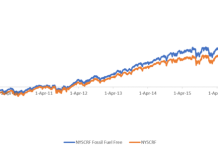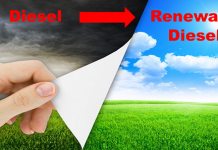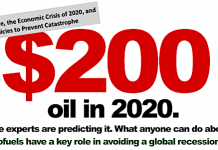by Garvin Jabusch
Sempra Energy’s leaking gas field in Porter Ranch, CA, near Los Angeles, has been making national headlines recently, as it now enters its third month of being the largest methane leak in U.S. history. How big is that? The LA Times says that, “by early January, state air quality regulators estimate, the leak had released more than 77 million kilograms of methane, the environmental equivalent of putting 1.9 million metric tons of carbon dioxide in the air.”
1.9 million metric tons of carbon dioxide and counting. In addition, methane isn’t only a powerful greenhouse gas, it can have health consequences for those exposed. In reporting that California Governor Jerry Brown has formally declared the leak an emergency, the New York Times on January 6 wrote that, “already, more than 2,000 families have left this affluent suburb because of the terrible smell and its side effects, which include nosebleeds, headaches, dizziness and vomiting.”
What does it all have to do with investing? It tells us more than you might think, and it speaks volumes about how many investment managers think about the idea of a sustainable economy, and also about the limited tools they have to construct a portfolio that reflects actual long-term viability of the global economic system. As economist and sustainability expert Ken Coulsen tweeted recently, “I thought the idea in #trading was to ask ALL the [questions] – most investment groups refuse to go deep on the intersection of #science [and] #economics.”
Coulsen’s right. Investment managers are supposed to be assimilating all the risks, so why do some have a blind spot when it comes to natural gas and other fossil fuels? Part of it is inertia, a sense that doing things the way they’ve always been done must be “right.” Part of it is ideological and a tribal affiliation among some institutions and investors who resist the idea of an economic switch to renewables as simply contrary to the way they view the world.
The fact that Ted Cruz, a leading GOP candidate for the U.S. presidency, recently described signatories to the COP12 agreement as, “ideologues, they don’t focus on the facts, they won’t address the facts, and what they’re interested [in] instead is more and more government power” tells us all we need to know about both the politics involved and the power of Orwellian rhetoric in claiming truth in the opposite of reality.
Finally, the standard tool kit used by most portfolio managers, collectively called modern portfolio theory, doesn’t particularly allow one to attempt to look forward in assessing risk, basing almost all such calculations on the way stocks and groups of stocks have performed historically.
In any event, Sempra’s utility SoCalGas didn’t think too much about the risks, and neither did a lot of energy investors. SoCalGas/Sempra, as reported by Newsweek, had not installed a “subsurface safety valve that was found faulty and removed in 1979but never replaced, because the well was not close enough to residential areas to necessitate such a valve. [Rodger] Schwecke, the SoCalGas vice president, says he does not know why the valve was removed and never replaced, but he downplays the ability of a subsurface valve to stop a powerful leak like this one. “It wasn’t a requirement,” he says without much contrition.”
Zero Hedge reports that, “The Company Behind LA’s Methane Disaster Knew Its Well Was Leaking 24 Years Ago,” and yet the firm was still considered an upright corporate citizen, among the finest and safest of our fossil fuels firms. Many money managers did not perceive a risk. According to StreetInsider.com, on October 30th eight days after the leak was detected, “Standard & Poor’s Ratings Services affirmed its ‘BBB+’ issuer credit rating (ICR) on Sempra Energy (NYSE: SRE) and our ‘A’ ICRs on subsidiaries San Diego Gas & Electric Co. (SDG&E) and Southern California Gas Co. (SoCal Gas). The outlook remains stable.”
Then, on November 16, seven weeks after the world became aware that the leak had begun, the company itself announced that, “Sempra Energy (NYSE: SRE) has been selected for the S&P 500 Climate Disclosure Leadership Index in 2015. The S&P 500 Climate Disclosure Leadership Index lists the top 10 percent of companies within the S&P 500 Index for the depth and quality of climate change data disclosed to investors and the global marketplace.”
Obviously, there is a disconnect between real world, scientifically verifiable risks and traditionally contemplated investment risks, at least in the case of SoCalGas at Sempra. Which is a danger when you get into the business of looking for standouts in an inherently destructive business: even the very best are still destructive. It’s like trying to decide which cancer you would like to get. Maybe you’d select skin cancer because it’s eminently curable if caught early, but the real answer is you don’t want cancer at all.
The risks are real. The Los Angeles Daily News says that “Since Oct. 23, Southern California Gas Co. has spent $50 million to try to stem the flow from the nation’s fifth largest natural gas field, while relocating two schools and some 12,000 residents, many of them sickened by gas detection fumes. A fix may not be in the works until March.”
That means SoCalGas may still be in for more expenses than they thought. Maybe a lot more. Again, from the Los Angeles Daily News, “the researchers recorded elevated levels of the main ingredient in natural gas10 miles away from the nation’s largest gas leak.” A recent essay from the Union of Concerned Scientists adds, “while this is just the most recent in a long history of oil and gas industry disasters, the particulars of this circumstance are unprecedented (sadly not unheard of). Legal experts predict that SoCal Gas will be on the hook for billions over a long period of time,” and “3,000 more [families] are waiting to be relocated…As these houses sit empty, they become vulnerable to crime and decline in value. And beyond paying to fix the leak, cover medical costs, and relocate families, SoCal Gas is already fielding 25 lawsuits with more expected in the coming weeks, months and perhaps years.”
The traditional way of thinking about investment risks
excludes hugely important ones that should have been incorporated into the fiduciary standard a long time ago, begging the question: what is the fiduciary standard for if not to assess these risks? We allow extremely risky activities from a regulatory point of view and then ignore these risks in investment management. But if you don’t include these risks, you’re exposing yourself and your clients to them, and the minute these risks are recognized for what they really are, you could see your value in certain companies, such as SoCal Gas, evaporate before you can get your next statement. So why build a portfolio with only the ‘good cancers’ in it? Why not build one with no disease at all?
As Newsweek points out, “The methane leak in Porter Ranch, though, is an apt demonstration of our complex affair with carbon fuels. The natural gas stored in Aliso Canyon flows to the homes of about 20 million customers in the greater Los Angeles area. So while we contemplate wind farms and solar arrays, we remain married to an antiquated infrastructure that lets us do what we have done for centuries: extracting energy by burning carbon.” And so, sometimes ignoring all seemingly non-financial risks, do fund managers.
But, increasingly, someone has to answer for those risks. Fossil fuels companies don’t think it will be them. EDF.org says it all when they report that, “none of the 65 oil and gas companies reviewed in a just-released study by Environmental Defense Fund disclose targets to reduce methane emissions, the main ingredient in natural gas.”
You don’t manage a risk you don’t think you’re going to have to pay for, and therefore most oil and gas companies don’t manage them adequately. For portfolio managers it’s different though, we can and should be thinking about risks even when companies themselves don’t. Our clients’ financial well-being is at stake.
Yet portfolio management, populated with professionals who try to leave no stone unturned in rooting out risks and dangers associated with every stock, has a blind spot when it comes to fossil fuels. In a time when it is clear that the beginning of the end of the fossil fuels era has begun, when we know fossil fuels contribute massive risks to the global economy from all the outcomes of warming to failing health to destruction of land and biodiversity, when we can say with certainty that for many purposes renewable energies are now more economically competitive, most investment professionals still continue to hold coal, oil and gas stocks. They have their stated reasons: diversification, historical performance, modern portfolio theory and fiduciary standard requirements. But backward-looking diversification methodology (again, the standard in present day investment management) has allowed construction of portfolios fraught with systemic risks.
What the LA methane leak tells us about investing today is as much about inertia as it is about research and new ideas. This is probably inevitable and to be expected, but it’s a shame, because where capital is invested in this world is where change happens, and it’s time professional investors realized they need to stop investing in the world’s greatest systemic risk.
Given the tools provided by modern portfolio theory, mainstream investment management only seems to be able to think as far as: “we need to be sustainable, so which fossil fuels firms are greenest?” This is shortsighted. The world economic forum at Davos now sees climate as the world’s number one economic risk; why don’t most portfolio managers and other fiduciaries?
Garvin Jabusch is cofounder and chief investment officer of Green Alpha® Advisors, LLC. He is co-manager of the Shelton Green Alpha Fund (NEXTX), of the Green Alpha Next Economy Index, the Green Alpha Growth & Income Portfolio, and of the Sierra Club Green Alpha Portfolio. He also authors the Sierra Club’s green economics blog, “Green Alpha’s Next Economy.”






